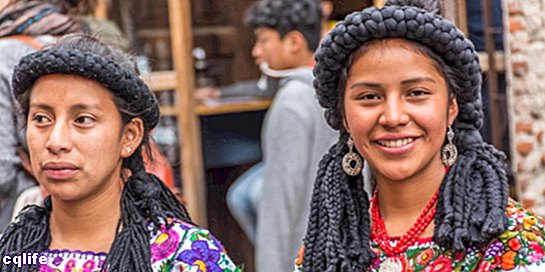- What is the Mayan language?
- History of the Mayan language
- Characteristics of the Mayan language
- Mayan language words
- Poems in the Mayan language
- Riddles in Mayan language
We explain what the Mayan language is, its history and characteristics. Also, examples of Mayan words, poems and riddles.

What is the Mayan language?
The Yucatec Mayan is commonly called the Mayan language or Mayan language, that is, the native language of the Yucatan peninsula, in southern Mexico (Yucatan, Quintana Roo and Campeche states). It belongs to the surviving body of the Mayan languages (spoken in Belize, Guatemala and southeastern Mexico), the main Mesoamerican linguistic family.
In Mexico, the Mayan language is the second indigenous language with the largest number of speakers after Nahuatl. Today it is spoken by more than 800,000 persons in the national territory, along with some 5,000 in Belize and 700 in Guatemala.
In addition, according to the government of the latter country, 25 languages are spoken in its territory, of which 22 qualify as Mayan languages (with a common trunk to Yucatec Mayan).
In these regions the Mayan language is widely used, both for teaching school, domestic life and local economic transactions. It has been recognized since 2003 as one of the national languages of the Mexican State.
History of the Mayan language
All Mayan languages are descendants of a Proto-Maya language that dates back approximately 5,000 years. It arose in the Mesoamerican area and diversified very quickly into a set of Mayan languages, a family of languages that exhibit enormous similarities. Some of them were written, in pre-Columbian America, using glyphs.
The writing was common during the classical period of the Mayan Culture (c. 250-900 AD), and many of its codices on bark paper have survived to this day. Along with the rich literature Colonial Maya of the sixteenth, seventeenth and eighteenth centuries, constitute very important documents for the understanding of the Mesoamerica prior to the arrival of the Spanish.
Thanks to this, the Mayan language family is one of the most documented and known of all America. They cover 22 official languages in Guatemala and 8 in Mexico, with Yucatec Mayan being just one of them.
Characteristics of the Mayan language
In general, the Mayan language is a synthetic and thrifty language, based on monosyllabic morphemes. Although it saves vowels, it does not produce long consonant strings or vowel groupings. They do not exist articles, neither gender, nor mode infinitive.
Many of his verbs also function as nouns, and he uses an apostrophe to separate repeated letters. The entire language can be written today with Latin characters.
Phonetically, Yucatec Maya abounds with sounds deaf consonants, as well as glottalized consonants (pronounced at the end of the throat). It has five vowels, like Spanish, which can be long, and also two glottalized vowels. It also has two tones, one high and the other low, and its pronunciation is usually fast and complex.
Mayan language words
Here is a brief sample of words in Mayan:
- Janal: Food.
- Naj: Home.
- Aj: Sir.
- Xiix: Rest, residue.
- T’eel: Rooster.
- Ma’ax: Monkey.
- Soots ’: Bat.
- Miis: Cat.
- Ha ’: Water.
- Peech: Tick.
- Báaxal: Toy, joke.
- Nojoch: Great.
- Maalix: Ordinary, common.
- Tuunich: Stone.
- Puuch ’: Smash or squash.
- Pan ch’eel: Toucan.
- Am: Spider.
- In’kel: Insect.
- Tsíimim: Horse.
Poems in the Mayan language
And here are a couple of poems in Mayan with its Spanish translation:
To Yáamaj
Mix máak ku yuk’ul tin luuch,
mix máak ku jupik and k’ab ichil in leek
mix máak ku janal tin laak.
A yámae júntuul tzayam kóil peek ’ch’apachtán tumen máako’ob.
Najil naj ku paatal yéetel u xtakche’il jool naj.
Your laakal máak yojel dzok u chíiken a yáamaj.
Your love
Nobody drinks from my canteen
no one slips their hand into my bread basket,
no one eats from my plate.
Your love is a raging dog that is pushed away by everyone else.
In every house, the doors are closed for you.
And people know that your love has bitten me.
Bin in tzuutz a chi
Bin in tz’uutz ’a chi
Tut yam x cohl
X ciichpam zac
And an and an a u ahal
I will kiss your mouth
I will kiss your mouth
among the cornfield plants,
sparkling beauty,
you must hurry.
Riddles in Mayan language
Finally, a couple of riddles in Mayan with their respective Spanish translation:
Question: Ch ’ujuk in k’aaba’. Kin ch’ujulkinsik u kuxtal le maako’obo
Answer: Kaab.
Translation: Sweet is my name. And I sweeten the life of man (Honey).
Question: Tilla ni, tillan, saya ni Sayán, purini, purín.
Answer: oochel.
Translation: I sit, sit, stand, stand. (The shadow).
Question: Wa na’at na’ateche ’na’at le na’ata’: Na’aj ku na’akal, wi’ij ku lúubul.
Answer: Bóolador wa ka’anal waak ’.
Translation: Guess by guessing Full belly flying. Hungry he comes down whistling. (The rocket or firecracker).
